I drove out to Pennsylvania’s rural Amish country to see a man about a wagon. I was looking to nail down the answer to a question I’ve had since 2015 when I traveled to England on a work trip.
Back when I was motoring through London, very carefully, in a Mini Cooper, I wondered: Why was I driving on the “wrong” side of the road? I’m from the United States, which started as a bunch of former British colonies. We speak the same language, more or less. But we drive on opposite sides, sometimes with hazardous effects.
And the United Kingdom isn’t the only country, of course, to do it the other way. It turns out that about 30% of the world’s countries mandate left-side driving and another 70% or so stay to the right. How it got that way is a winding tale.
In Europe, Napoleon Bonaparte played a central role. In the United States, Henry Ford often gets the credit, but that’s actually wrong. It goes much further back than Ford. Not only does traffic on the right pre-date cars, it pre-dates the establishment of the United States.
That’s how I ended up in a former tobacco drying barn in Conestoga, Pennsylvania, looking at a wagon – only a few days after I test drove a Tesla Cybertruck, its modern electric descendant. John Stehman, whose family has farmed land in the area since 1743, met me. He’s president of the Conestoga Area Historical Society, and, as I had learned from research on the history of roads and driving, the Conestoga wagon was key to this whole story.
Wagon trains
These big wagons, with their tall, arched cloth roofs, became icons of America’s westward expansion as they carried the belongings of pioneers from the east out to the frontier. Back in the early 1700s, though, western Pennsylvania was the distant frontier.
Conestoga wagons were developed by local carpenters and blacksmiths to carry goods, including farm produce and items bartered from Native Americans, to markets in Philadelphia. Philadelphia was, at the time, one of the biggest cities in the colonies. The wagon driver could ride one of the horses or sit on a “lazy board” that slid out of the side of the wagon. But when more active control was needed, he walked alongside the horses, pulling levers and ropes.
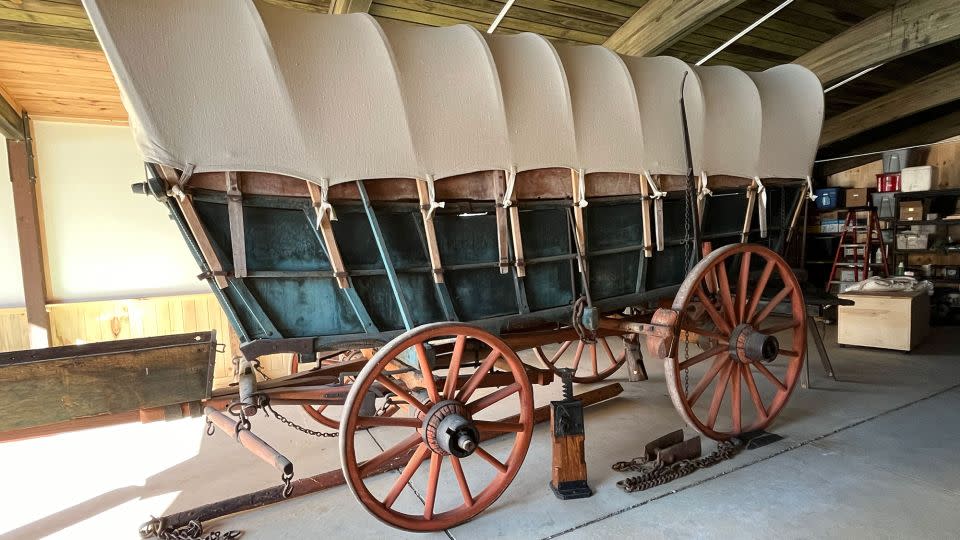
“He would give the verbal command, ‘Gee’, ‘Haul,’ or whatever, and they would hear that,” Stehman said. “He would also maybe tug on this (leather ‘jerk line’) once or twice.”
I imagined myself walking down a long dusty trail leading a team of horses pulling this blue-painted wagon. I’m right-handed, like most people. For just that reason, Conestoga wagons had the controls on the left side, close to the wagon driver’s right hand. That meant the driver was toward the middle of the road and the wagon to the right.
Eventually, there was so much trade and traffic between Lancaster County, Pennsylvania, and Philadelphia that America’s first major highway was created. The Philadelphia and Lancaster Turnpike Road opened in 1795. Among the rules written into its charter, according the book “Ways of the World ” by M.G. Lay, was that all traffic had to stay to the right — just like the Conestoga wagons did.
In 1804, New York became the first state to dictate traffic stay to the right on all roads and highways.
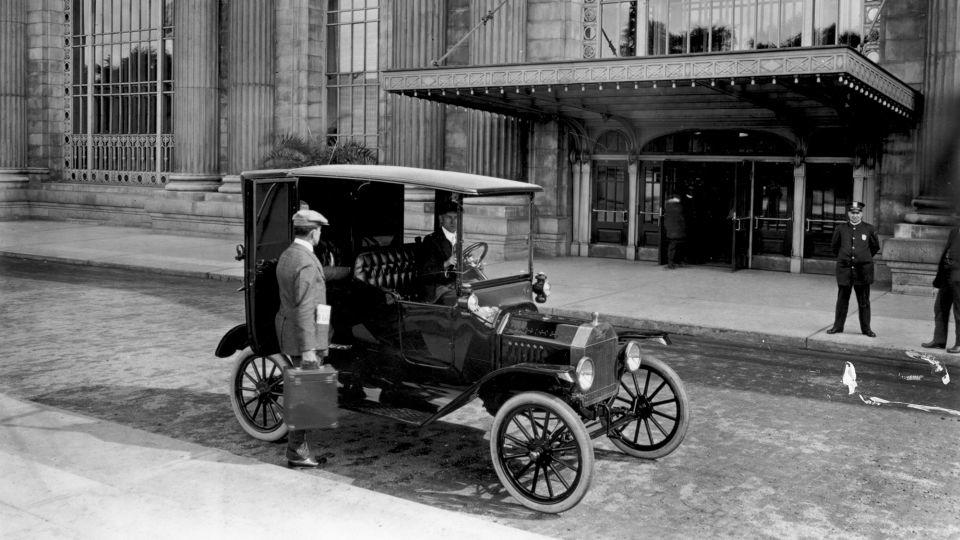
Some people credit Henry Ford with standardizing US traffic on the right side of the road because, in 1908, Ford Motor Co. put the steering wheel on the left side of the hugely popular Model T. Really, though, Ford was just responding to driving habits that had been largely established long before.
The really weird thing is that most of the rest of Europe, besides Britain, drives on the right like Americans do.
Napoleon’s march through Europe
Why are the British outliers even on their own continent? Credit, or blame, the French.
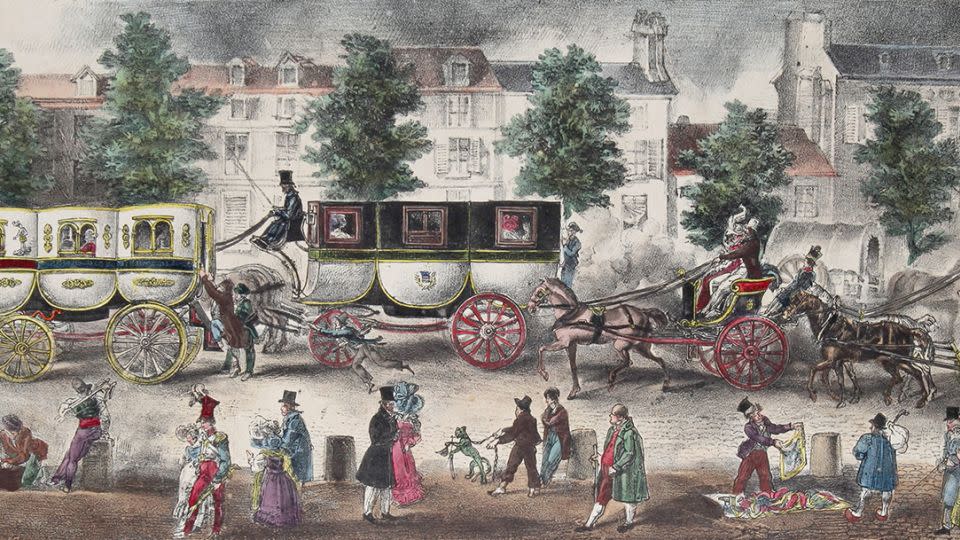
The French revolutionary government under Maximilien Robespierre — best known for leading the late 18th-century “Reign of Terror” in which thousands were guillotined — dictated that everyone should drive on the right.
The left side of the road was, by long cultural convention, reserved for carriages and those on horseback. In other words, the wealthier classes. Pedestrians, i.e. poorer folks, kept to the right. Forcing everyone to the same side of the road, besides being good for traffic, was part of doing away with these snobby class distinctions.
The upper classes likely went along since, in those days, being seen as aristocratic was not only unfashionable, it was rather dangerous. (See above about guillotines.)
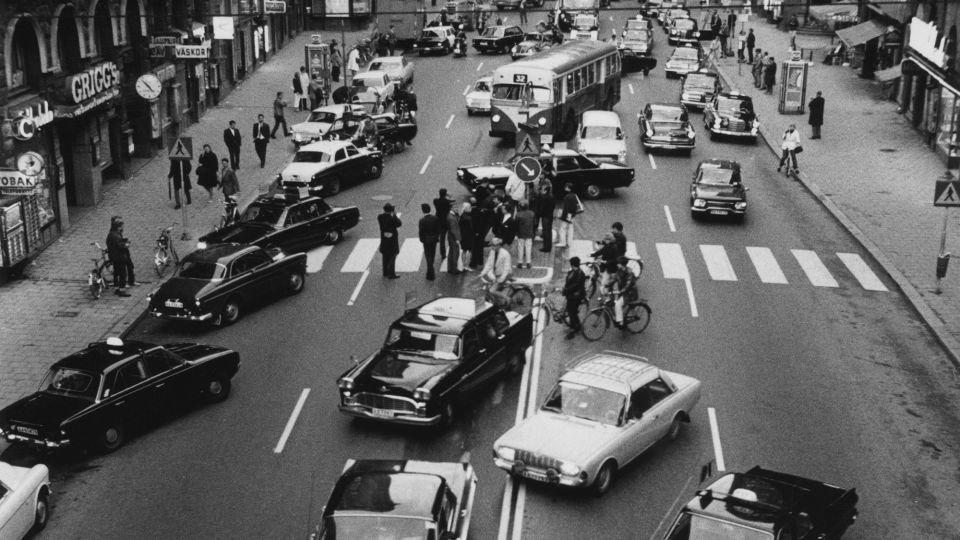
The French policy is said to have been spread by Napoleon as his armies marched through Europe. Some evidence for this can be found by looking at a map of the Napoleonic empire in 1812.
There is one nation that was neither a subject nor ally of Napoleon. That would be Sweden. Sweden drove on the left, up until one surprisingly uneventful day in 1967 when drivers there switched to the right.
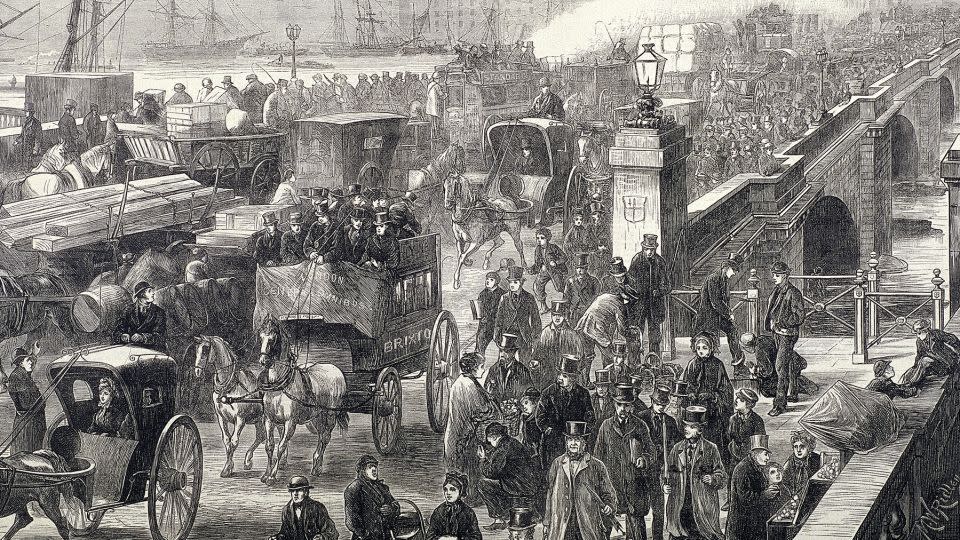
Britain, literally, went the other way from France.
Historian Lay’s notion is that it had to do with the different types of conveyance used. There were fewer industrial-sized wagons in Britain, and more small carriages and individual horse riders. Horse riders preferred to stay to the left to keep their right hands toward oncoming traffic for greetings and, if needed, fighting.
Hazardous driving
Whatever the reasons, there are sometimes real consequences to switching sides and there have been serious crashes.
William Van Tassel, AAA’s head of driver training, recommends that drivers take extra steps to concentrate when driving on the other side. For one thing, keep the radio off.
“I think it’s fine to talk to yourself, while you’re driving over there. That kind of forces you to be focusing on driving,” he said. “OK, tight left or far right. Check for traffic from the right rather than the left. Whatever it is, whatever works.”
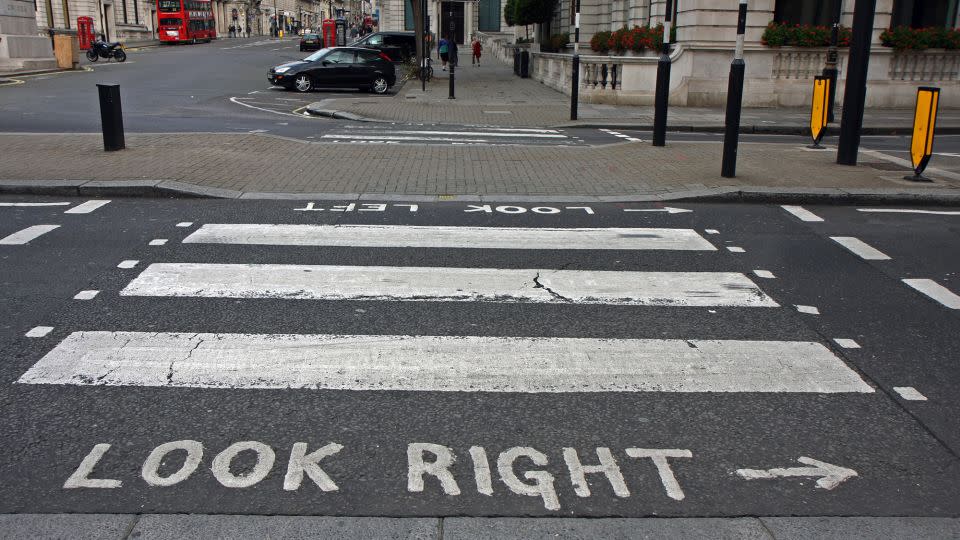
At Avis Budget Group, which rents lots of cars to Americans driving in the United Kingdom, rental agents make sure to remind customers about driving on the left. They take other steps, too.
“In addition, all of our vehicles throughout the UK have ‘Drive on the left’ stickers and in major locations we hand out Drive on the left wristbands, which we advise our customers to always wear on the left wrist as a reminder of which side of the road to drive,” Avis Budget said in a statement.
AAA’s Van Tassel also recommends having a passenger along as another pair of eyes, something that helped me when I was driving there, although I occasionally terrified her.
For more CNN news and newsletters create an account at CNN.com